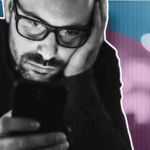By Shauna Moran, Insights Analyst at GWI
How societies talk about looks and appearances is changing. According to Unilever, more beauty campaigns are promoting strong instead of straight hair, even-toned skin instead of fair, and a healthy physique instead of a slim one.
And this has influenced the way consumers think. Fewer New Year’s resolutions makers this year are aspiring to lose weight than in 2020, with many replacing past avoidance tactics with feel-good “approach” goals.
People criticised social media for its role in keeping unrealistic beauty standards alive long before COVID-19. But today, with mental health being so important and consumers thinking more holistically about their health, beauty content is often put under a microscope.
Those bringing this conversation into the mainstream are either taking a stance against lingering ideals or poking fun at them. #nofilter currently has over 4 billion views on TikTok and 286 million posts on Instagram; and the yassification trend, where people edit a face beyond recognition, has caught on — highlighting how common retouching is and how it makes us all look the same.
With mindsets shifting and consumers increasingly speaking the language of #nofilter, brands and their ambassadors might benefit from making some tweaks to their communication style.
Many Don’t Think Filters Should Be Used for Branding
On social media, we’ve seen a shift away from planned-out, perfect posts. Since 2020, Europe and North America have seen a drop in Instagram, Snapchat, and TikTok users applying filters; and around 1 in 5 social media users in 7 countries agree they’re less interested in using filters or special effects than they used to be.
This outlook doesn’t just affect the way consumers use social media, it also influences how they receive promotional posts. A fifth say they most want to see content that doesn’t use image filters from the people or organizations they follow, which means unedited images often have more drawing power than edited ones.
Those who follow beauty experts or like to see aspirational content like travel or fashion posts are also more adamant that influencers make it clear when they use filters on their photos: 37% of beauty expert followers agree they should do this, compared to 24% of all social media users. A months-long #filterdrop campaign was spearheaded by make-up artist Sasha Pallari, which supports the idea that the industry’s biggest fans are among its top critics.
Brands can keep this group happy by doing more quality control checks. A growing number of brands work in long-term partnerships with social media personalities, rather than on one off-projects, which means they’re associated more closely with the content their ambassadors create. So, ensuring they have a strong set of guidelines in place that all collaborators are briefed on is best practice.
The possibility of new regulations is an added incentive for putting better measures in place. Editing professional posts without acknowledging the fact is already illegal in Norway, and the UK’s Digitally Altered Body Image Bill hopes to tackle the recent rise in eating disorders by requiring influencers to display warning logos in cases where body shapes have been altered. Right now, posts that overstep will be removed and banned from being reposted, but tomorrow’s penalties could do more damage to a brand’s reputation.
Rather than trying to outrun future regulations, businesses can choose to act early. Not only will this steer them away from any nasty surprises, it will help their branding stand out amid a sea of lookalikes, and inspire loyalty among aspirational content fans.
Various Groups are Pushing for More Wellness in the Social Network World.
Consumers, and younger adults in particular, are hoping to bring more wellness to the world of social media through more laughter and less pretense. It might have been a popular quality beforehand, but 46% of all social media users and 52% of Gen Zs say that when it comes to the accounts they follow, humor has become more important to them since the pandemic — possibly because funny memes have helped people cope with stress during lockdowns.
Ziarekenya Smith founded what he refers to as a “healthy” social network in 2015. With Inpathy, he hoped to make social media more transparent and normalize moods. This is the premise behind a new wave of social media startups like Poparazzi and BeReal, which want to turn creation into a collective act and take me-me-me culture off its pedestal. These apps are unlikely to majorly disrupt the wider social landscape anytime soon, but their existence and growing popularity points to demand for more laid-back interactions.
What’s more, this movement is also unfurling on leading platforms. Since 2020, there’s been a 20% increase in the number of Instagram users engaging with Reels. Short videos are quick to create and offer the less polished, more spontaneous content people are after. Plus, editing tools like TikTok’s Stitch or Instagram’s Remix feature help brands jump into trending conversions and quickly build on what internet users are putting out there.
According to Smith, “The unwritten rules of social are that if life isn’t perfect, you don’t talk about it”; consumers and startups are working to change that, and good things will come to brands that make themselves part of the solution.








